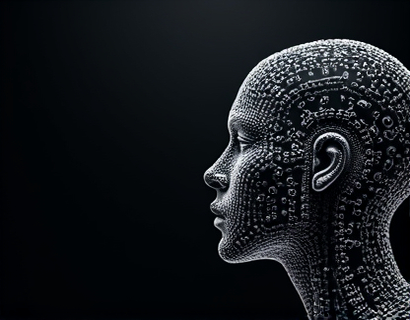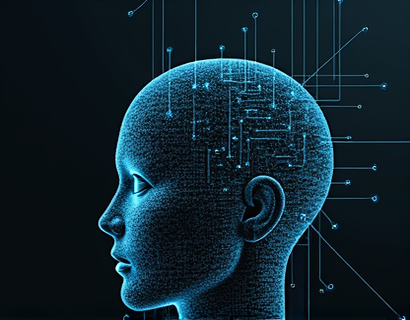Transforming Healthcare Accessibility with AI-Driven Chat Platforms
In the rapidly evolving landscape of healthcare, the integration of artificial intelligence (AI) has opened new avenues for enhancing patient experiences and streamlining information dissemination. An AI-driven chat platform stands as a revolutionary tool, offering verified, specialized clinic information and educational resources tailored for users of all ages. This comprehensive guide delves into the multifaceted benefits of such platforms, focusing on how they can revolutionize healthcare accessibility and provide child-friendly learning experiences.
Enhancing Patient Engagement Through AI Chat
The primary goal of an AI-driven healthcare chat platform is to bridge the gap between patients and healthcare providers by providing instant, accurate, and personalized information. These platforms leverage natural language processing (NLP) and machine learning algorithms to understand and respond to user queries effectively. By doing so, they not only enhance patient engagement but also empower individuals to take a more active role in their healthcare journey.
Verified and Specialized Information
One of the most significant advantages of AI-driven chat platforms in healthcare is their ability to deliver content-verified information. Unlike general search engines, these platforms source data from trusted medical databases and reputable sources, ensuring that the information provided is accurate and up-to-date. This feature is particularly crucial in a field where misinformation can lead to serious consequences. Users can receive detailed explanations of medical conditions, treatment options, and preventive measures, all backed by credible sources.
Personalized Healthcare Guidance
AI chat platforms can analyze user inputs and provide personalized guidance based on individual health profiles. For instance, a user with a specific medical condition can receive tailored advice on diet, exercise, and medication management. This level of personalization is achieved through advanced algorithms that learn from user interactions and historical data, continuously refining the quality of advice given. Such personalized interactions not only improve user satisfaction but also contribute to better health outcomes.
Educational Tools for All Ages
The educational potential of AI-driven healthcare chat platforms is vast, catering to a diverse audience ranging from healthcare professionals to students and families. These platforms offer a range of educational resources, including articles, videos, and interactive modules, designed to enhance health literacy and promote preventive care.
Comprehensive Health Library
A core component of these platforms is a comprehensive health library that covers a wide array of topics. Users can access detailed information on various medical conditions, symptoms, treatments, and lifestyle tips. The library is structured to allow easy navigation, with categories and subcategories making it simple to find relevant information. For example, a user searching for "childhood vaccinations" will find a section dedicated to immunization schedules, common concerns, and FAQs.
Child-Friendly Learning Environment
Recognizing the importance of health education from a young age, these platforms include a child-friendly version that ensures safe and educational interactions. This version is designed with intuitive interfaces and age-appropriate content, making complex medical concepts accessible and engaging for children. Interactive elements such as quizzes, games, and animated explanations help reinforce learning and keep young users engaged.
The child-friendly version also includes parental controls and monitoring features, allowing guardians to oversee their children's interactions and ensure they are accessing appropriate content. This dual approach not only educates children but also involves parents in the learning process, fostering a supportive environment for health literacy.
Revolutionizing Clinic Information Access
One of the most impactful features of AI-driven healthcare chat platforms is their ability to provide verified information about clinics and healthcare providers. Users can search for clinics based on location, specialties, and patient reviews, all presented in a clear and organized manner. This functionality is particularly valuable for individuals seeking new healthcare providers or looking to switch clinics.
Specialized Clinic Insights
These platforms offer detailed profiles of clinics, including information on their services, staff qualifications, and patient feedback. Users can filter search results based on specific criteria, such as insurance accepted, language spoken, and availability of specialized treatments. This level of detail helps users make informed decisions about their healthcare needs, reducing the anxiety often associated with choosing a new provider.
Real-Time Updates and Notifications
AI chat platforms can also provide real-time updates on clinic operations, such as appointment availability, emergency services, and health alerts. Users can receive notifications about important health news or clinic events, ensuring they stay informed and prepared. This feature is especially beneficial for managing chronic conditions or scheduling regular check-ups.
Promoting Healthtech Innovation
The integration of AI in healthcare chat platforms is a testament to the growing role of healthtech in transforming the industry. These platforms not only enhance patient experiences but also drive innovation by leveraging advanced technologies. The continuous learning and adaptation capabilities of AI ensure that these platforms remain at the forefront of healthcare technology, paving the way for future advancements.
Interoperability and Data Integration
One of the key challenges in healthcare is the interoperability of different systems and the integration of diverse data sources. AI-driven chat platforms address this by seamlessly integrating with electronic health records (EHRs), wearable devices, and other health-related technologies. This integration allows for a more holistic view of a patient's health, enabling more accurate and personalized advice. For instance, a user discussing their blood pressure can receive insights based on their recent readings from a smartwatch connected to the platform.
Enhancing Healthcare Professional Workflows
These platforms also benefit healthcare professionals by streamlining their workflows and providing them with valuable tools. Clinicians can use the chat interface to quickly access patient information, review medical literature, and stay updated on the latest research. This efficiency not only improves the quality of care but also reduces the administrative burden on healthcare providers, allowing them to focus more on patient interactions.
Ensuring Safety and Privacy
As with any technology handling sensitive health information, ensuring the safety and privacy of users is paramount. AI-driven healthcare chat platforms implement robust security measures, including encryption, secure authentication protocols, and compliance with regulations such as HIPAA. These measures protect user data from unauthorized access and breaches, building trust and confidence in the platform.
Child Safety Measures
For the child-friendly version, additional safety measures are in place to ensure a secure environment. These include strict content filtering, monitoring of user interactions, and the absence of advertising or external links that could pose risks. Parental controls allow guardians to set boundaries and monitor their children's activities, providing peace of mind.
Conclusion
The advent of AI-driven healthcare chat platforms marks a significant milestone in the evolution of healthcare accessibility and education. By offering verified information, personalized guidance, and educational tools tailored for all ages, these platforms are reshaping the way users interact with healthcare services. The child-friendly version further extends this impact by promoting health literacy from a young age and ensuring safe online interactions. As the healthcare industry continues to embrace these innovations, the potential for improved patient outcomes and enhanced user experiences becomes increasingly evident.










































